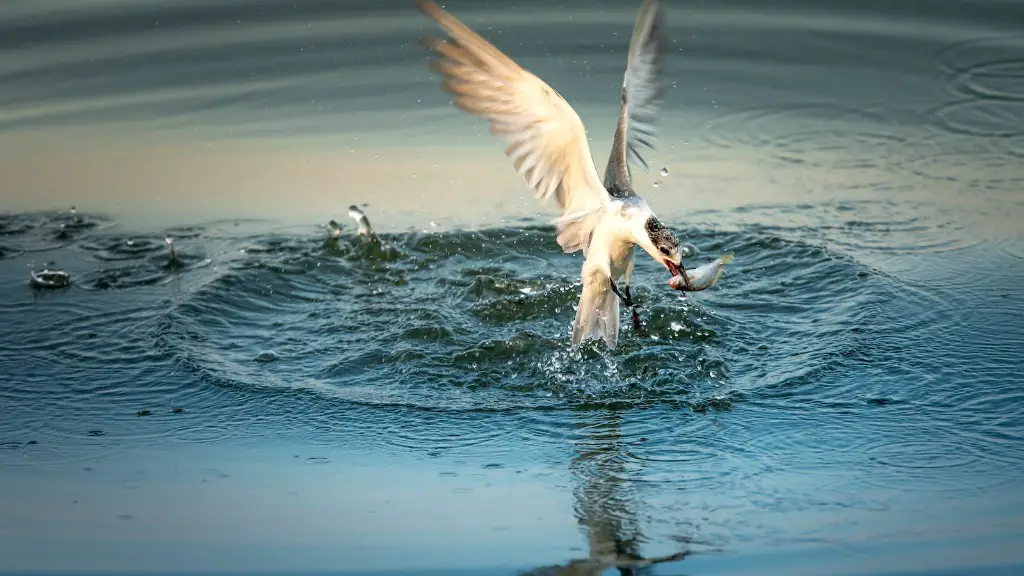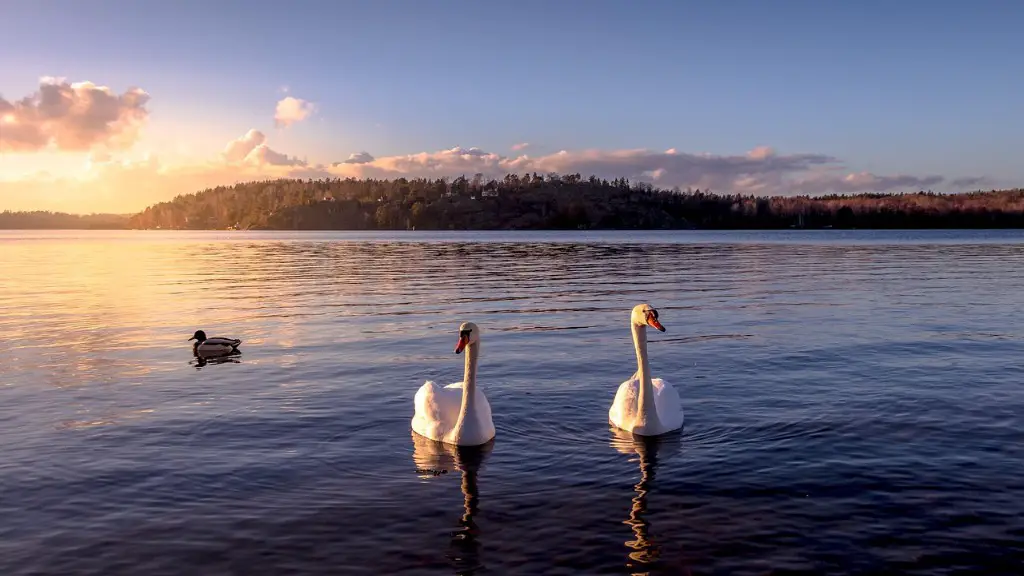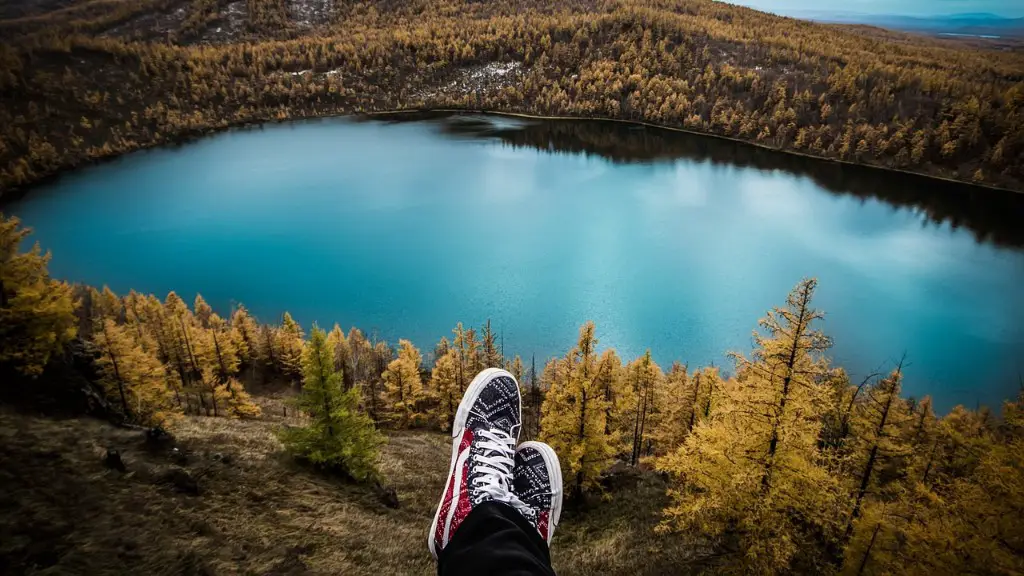A Picture of Lake Victoria
Lake Victoria is the largest lake in Africa, located in central and east Africa. It is the source of the Nile River, the longest in the world and the main source of sustenance for millions of people in the region. The lake, named after Queen Victoria, has a maximum depth of 69 meters and covers an area of 68,800 square kilometers. The lake is surrounded by the countries of Tanzania, Kenya, and Uganda.
Lake Victoria is an extremely important resource in this region as it is home to ecologically valuable and diverse species. There are over 1,000 fish species in Lake Victoria, with around 200 being endemic to the lake. According to a study published in 2018, Lake Victoria is the most diverse lake in the world, containing more species of fish than the Amazon basin. This abundance of wildlife supports a multi-million-dollar tourism and fisheries industry, sustaining regional economies.
As a result of cultural and economic activities, the lake is threatened by a range of issues including deforestation, overfishing, polluting nutrients and chemical contaminants. These have resulted in substantial declines in biodiversity and have caused the number of native fish species to decrease drastically, dramatic declines in fish catches, and a severe decrease in the number of bird species.
Several organizations have been involved in efforts to protect the lake and its surrounding ecosystem. In 2009, the East African and Nile Basin countries developed the East African Community Lake Victoria Basin Commission (LVBC) and the Nile Basin Initiative (NBI) in order to “ensure integrated management and sustainable development of natural resources and to facilitate the delivery of tangible benefits to all stakeholders.”
Efforts to protect Lake Victoria are focused on three distinct areas: controlling excessive nutrient runoff from agricultural activities, regenerating and restoring the fisheries, and protecting the ecosystem from other threats such as oil spills. These efforts have been met with limited success as a result of issues such as the proliferation of illegal fishing activities. As a result, fish stocks remain depleted and pollution levels high.
In recent years, efforts have been made to address the issues of pollution, overfishing, and depletion of fish stocks. Through initiatives such as the Lake Victoria Environmental Management Program (LVEMP) and the African Great Lakes Initiative, organizations have attempted to transform Lake Victoria into a sustainable economic resource. The LVEMP is focused on improving and restoring the Lake’s fisheries, while the African Great Lakes Initiative seeks to improve the water quality of all African Great Lakes, not just Lake Victoria.
Despite the efforts of organizations and local governments, the future of the lake is still uncertain. The most pressing challenge that must be met is to reduce the pollution levels in the lake. This will require a comprehensive effort from the governments of the three countries surrounding the lake, as well as from the international community. Without a coordinated and sustained effort, the lake may not be able to recover its former health and abundance.
The Social Impact of Lake Victoria
Lake Victoria is one of the most important sources of sustenance and livelihoods for millions of people in the region. It provides employment and economic opportunities for local communities, and their reliance on it has remained constant over time. The extensive water-based activities in and around the lake, such as commerce, fishing, and tourism, offer the local communities with livelihood opportunities and help them to earn an income.
The cultural significance of Lake Victoria also plays an important role in the area. It is a sacred site for the people of the region, as it is believed to have been the birthplace of the Paluo people. Many cultural ceremonies, such as naming ceremonies, are performed at the lake and traditional songs and stories are passed from generation to generation. Moreover, Lake Victoria is an iconic symbol of the African continent.
However, the environmental degradation of the lake has had a serious impact on the local communities. The decline in fish stocks, pollution, and deforestation have all had negative effects on their livelihoods. Those involved in the fishing industry have been particularly affected, as the reduced supply of fish has caused their incomes to decrease and their losses become particularly severe. This has created an economic ripple effect, as the other industries that rely on the lake’s resources, such as tourism, have also been affected.
The deterioration of the lake has also affected the local cultures. Traditional ceremonies and songs have been lost, as the lake’s cultural sacredness has increasingly been disregarded. Moreover, the presence of pollution in the lake’s waters has caused people to fall ill, forcing them to seek medical help or alternative employment. This has resulted in a deterioration of the local communities’ traditional lifestyles.
In addition, local communities living around the lake struggle to deal with the dangers posed by pollution such as toxic algae and the introduction of alien species. In recent years there have been many cases of deaths due to the ingestion of water contaminated with toxic algae. These toxic species can accumulate in the human body, causing serious health issues and sometimes even death.
Moreover, invasive species such as Nile perch compete with native species for resources, which can significantly alter the lake’s food web. This can have serious consequences, as the food chain can become unbalanced, leading to decreased populations of native species and an overall decrease in biodiversity. The presence of invasive species can also impede efforts to restore the lake to its former health.
The Impact of Climate Change on Lake Victoria
Climate change is having a significant impact on Lake Victoria and its surrounding ecosystem, particularly in terms of water quality, temperature, and the availability of nutrients. The rise in temperatures has caused a decrease in the levels of dissolved oxygen in the lake, creating ideal conditions for the growth of toxic algae. This has led to cases of toxic blue-green algae in the lake, which are hazardous to both the lake’s ecosystem and human health. In addition, climate change is causing the water levels to rise, leading to flooding in some areas.
The increased temperatures and altered water levels have also contributed to an increase in evaporation, resulting in a decrease in the lake’s water levels. This has caused an increase in salinity, which can have a negative impact on the lake’s fish populations and can also lead to the disruption of the lake’s food chain. In addition, the altered temperature and salinity can favor the growth of invasive species, further impacting the lake’s biodiversity and ecology.
Climate change is also having an impact on the precipitation patterns in the region, leading to periods of drought. This has caused an increase in the intensity and frequency of water shortages, resulting in reduced water availability for use by local communities. In particular, this can impede efforts to restore the lake and its surrounding ecosystems, as water conservation and restoration efforts are significantly hampered by the lack of water.
Climate change is also impacting migratory species, as altered precipitation and temperature patterns in the region are causing changes in the migratory routes and rate of arrival of many species. For example, many species of birds migrate to and from Lake Victoria, but the altered temperature patterns have caused them to arrive later or sometimes not at all. This has had a negative effect on the resident species, as the migratory species serve an important role in sustaining the lake’s food web.
Conservation and Protection Efforts
Several organizations have been involved in conservation and protection efforts for the lake and its surrounding ecosystems. Through initiatives such as the Lake Victoria Environment Management Program (LVEMP), organizations seek to restore and protect the lake, with a focus on reducing pollution, restoring fish stocks, and preventing the spread of invasive species.
Efforts to reduce pollution levels have focused on controlling nutrient runoff from agricultural activities, managing target species, and implementing strict environmental regulations. Organizations such as the East African Community Lake Victoria Basin Commission and the Nile Basin Initiative have also launched programs to protect the lake’s biodiversity, with a focus on restocking the fish population and ensuring sustainable fishing practices.
In addition, efforts have been made to protect the lake’s shoreline, including the introduction of buffer zones, mangrove forests, and other restored ecosystems. Through these efforts, local communities have been able to improve their livelihoods and protect their cultural heritage. Other efforts have also focused on increasing access to clean water and sanitation, as well as expanding education and awareness campaigns on the importance of sustainable resource management.
In recent years, organizations have also worked to reduce the spread of invasive species. This has included the removal of invasive species from the lake and maintaining strict control over import and export activities. In addition, the introduction of biocontrol measures such as the introduction of native species to compete with the invasive species have been used successfully.
As a result of the efforts of organizations and local governments, the lake’s fish stocks are slowly beginning to recover, and water quality is improving. In the future, with increased investments in conservation and protection efforts, Lake Victoria can remain a source of livelihoods and sustenance for the local communities.
Conclusion
Lake Victoria is a vital resource for the people of Central and East Africa, yet its ecosystems are under threat from a range of complex issues. Organizations and local governments have taken steps to protect the lake, yet there is still much to be done to ensure its long-term sustainability. Climate change has aggravated the threats to the lake and its surrounding ecosystems, making it even more important for the international community to act now to ensure a better future for the lake and its people.





